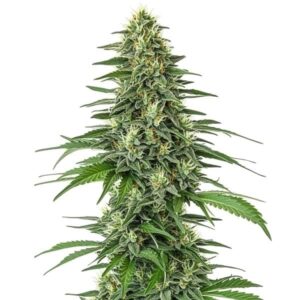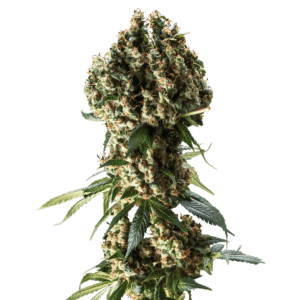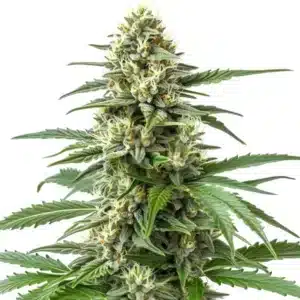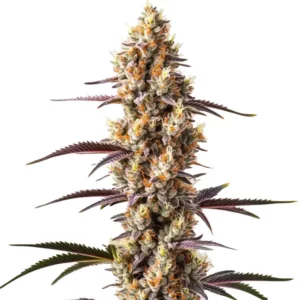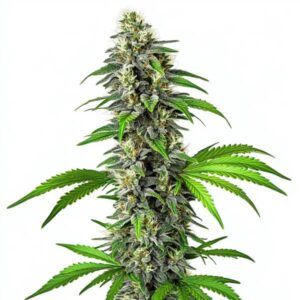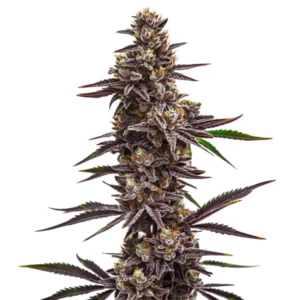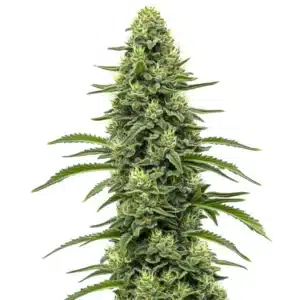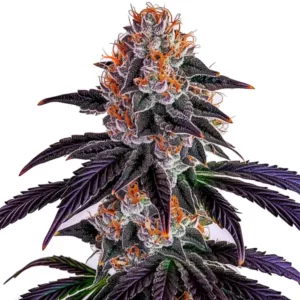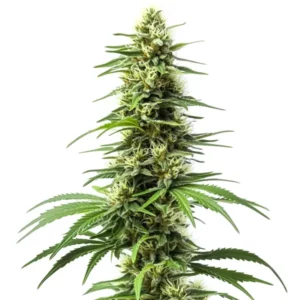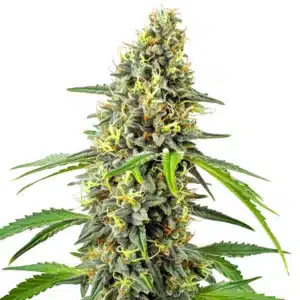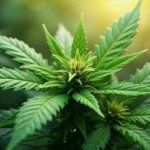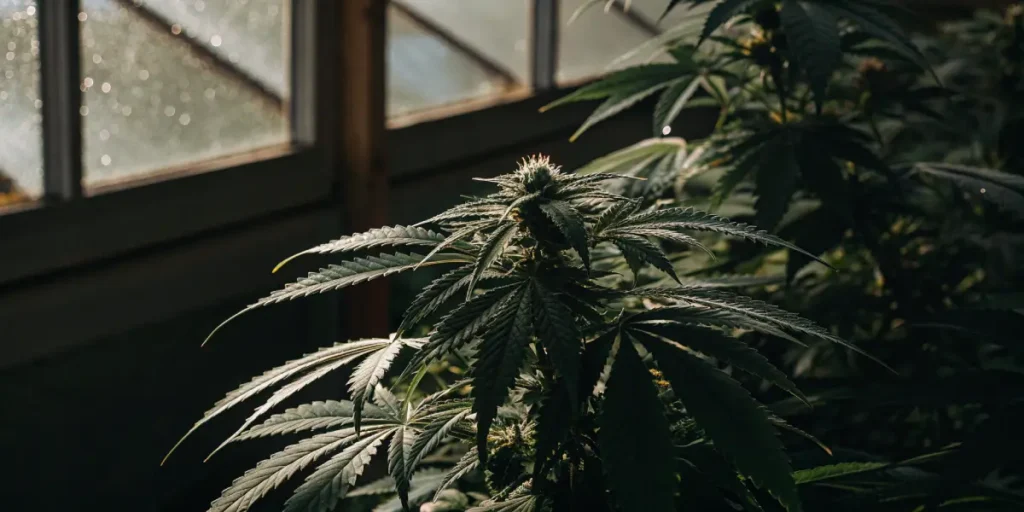
Environmental Stress and Cannabis Cannabinoid Profiles
Environmental stress and cannabis cannabinoid profiles are deeply connected. Stress can alter the chemical makeup of cannabis, affecting the potency and character of your harvest. Whether you’re a first-time grower or a seasoned cultivator, knowing the relationship between stress and cannabinoids is crucial.
When cannabis plants experience stress, such as changes in temperature, humidity, or light, their cannabinoid profiles can change significantly. These stress-induced alterations in cannabis cannabinoid profiles can make or break the final product. By learning how to manage these factors, you can enhance the quality of your cannabis.
Recommended Strains
Shiskaberry
|
|
THC | 14% - 18% (Medium) |
|
|
Type | Feminized |
|
|
Yield | High |
|
|
Phenotype | 80% Indica / 20% Sativa |
Granddaddy Purple
|
|
THC | 25% (High) |
|
|
Type | Feminized |
|
|
Yield | Medium |
|
|
Phenotype | 70% Indica / 30% Sativa |
One way to see the effects of environmental stress on cannabis cannabinoids is by examining different strains. For example, the Shiskaberry strain from Blimburn Seeds is known for its resilience to various stress factors. By cultivating strains like Shiskaberry, growers can better manage the impact of environmental stressors on cannabis cannabinoid levels.
Common Environmental Stressors
Environmental factors affecting cannabis cannabinoid content include temperature, humidity, and light intensity. Each plays a unique role in shaping the plant’s chemical profile. Monitoring these variables is essential for any grower aiming for a high-quality yield.
Temperature fluctuations can significantly impact cannabinoid development. Cannabis plants prefer stable temperatures; too hot or too cold can lead to undesirable changes. It’s important to maintain a consistent range to avoid stress-induced cannabinoid profile changes.
Beyond the primary stressors of temperature, humidity, and light, other environmental factors such as soil quality and air circulation can also affect cannabis cannabinoid profiles. Poor soil conditions or inadequate airflow can stress plants, leading to suboptimal cannabinoid production. By ensuring optimal growing conditions, you can mitigate the effects of environmental stressors on cannabis cannabinoid levels.
Knowing the interplay between different environmental factors is key. For instance, high humidity combined with poor air circulation can exacerbate mold growth, further altering the plant’s chemical makeup. By addressing each environmental variable, growers can prevent stress-induced alterations in cannabis cannabinoid profiles, resulting in a more consistent and high-quality yield.
Effects of Temperature on Cannabinoids
High temperatures can cause cannabis plants to produce more THC, the psychoactive compound responsible for the “high” sensation. However, excessive heat may also degrade other cannabinoids, leading to a less balanced product. Strains like the Grandaddy Purple from Blimburn Seeds can handle warmer climates better.
Cold temperatures can slow down the metabolic processes of cannabis plants. This can result in lower levels of cannabinoids like THC and CBD. Protecting your plants from extreme cold will help maintain a robust cannabinoid profile.
In addition to affecting THC levels, extreme temperatures can also impact terpene production, which plays a vital role in the aroma and flavor of cannabis. The effects of environmental stress on cannabis cannabinoids are often accompanied by changes in terpene profiles, which can alter the overall sensory experience of the final product.
Maintaining a stable temperature not only supports cannabinoid development but also preserves the delicate balance of terpenes. By using advanced climate control systems, growers can create an ideal environment that minimizes the impact of temperature fluctuations on cannabis cannabinoid profiles.
Humidity’s Role in Cannabinoid Profiles
Humidity levels can also cause significant changes in the cannabis cannabinoid profile. High humidity can lead to mold and mildew, which can damage the plant and alter its chemical makeup. On the other hand, low humidity can stress the plant, reducing cannabinoid production.
Maintaining optimal humidity levels is crucial for preserving the integrity of the cannabinoid profile. A humidity range of 40-60% is generally ideal for most cannabis strains. Using dehumidifiers or humidifiers can help keep levels in check.
The delicate balance of humidity affects not only cannabinoid levels but also plant health and vigor. High humidity can create a breeding ground for pests, further stressing the plant. Conversely, low humidity can exacerbate water stress, leading to reduced growth and vitality.
To effectively manage humidity, growers can implement strategies such as increasing ventilation or using moisture-retentive soil mixes. These practices can help stabilize environmental conditions, reducing the risk of stress-induced alterations in cannabis cannabinoid profiles.
The Impact of Light on Cannabinoid Content
Light is another critical factor in the development of cannabinoids. Cannabis plants require a specific amount of light to produce cannabinoids effectively. Both the intensity and spectrum of light can influence the plant’s chemical profile.
Too much light can lead to stress, causing the plant to produce more THC while diminishing other cannabinoids. Too little light can weaken the plant, resulting in lower cannabinoid levels overall. Using LED lights can help provide the balanced spectrum cannabis plants need.
The duration of light exposure, or photoperiod, also plays a crucial role in cannabis development. Altering the light cycle can induce flowering or prolong vegetative growth, impacting the overall cannabinoid profile. By carefully managing light schedules, growers can optimize cannabinoid production.
Light spectrum is another important consideration. Full-spectrum lighting can mimic natural sunlight, promoting robust plant growth and enhancing cannabinoid and terpene production. By investing in quality lighting solutions, growers can better control the effects of environmental stress on cannabis cannabinoids.
Promos & Deals
Practical Tips for Managing Stress
Managing environmental stress and cannabis cannabinoid profiles requires diligence and knowledge. By focusing on key areas such as temperature, humidity, and light, growers can significantly improve their crops. Here are some practical tips to help manage environmental stressors effectively.
First, invest in quality equipment to monitor and control environmental conditions. Tools like thermometers, hygrometers, and light meters are invaluable. They provide real-time data, helping you make informed decisions about your growing environment.
In addition to monitoring equipment, consider implementing routine checks and maintenance of your growing environment. Regular inspections can help identify potential stressors, such as pest infestations or equipment malfunctions, before they impact cannabis cannabinoid profiles.
Educational resources and community forums can also be valuable assets. By staying informed about the latest cultivation techniques and environmental management strategies, growers can enhance their ability to mitigate stress-induced alterations in cannabis cannabinoid profiles.
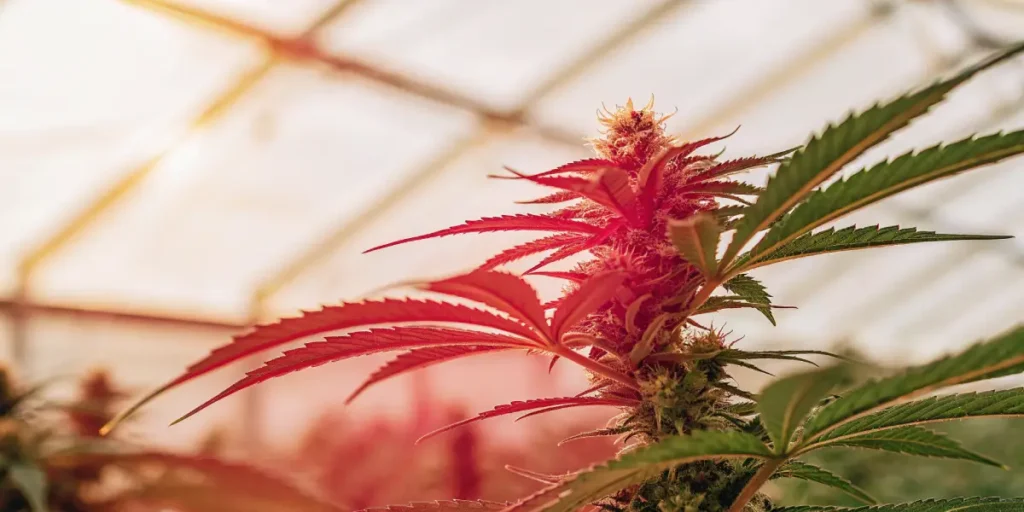
Using Technology to Your Advantage
Smart technology can automate many aspects of cannabis cultivation. Devices that control temperature, humidity, and lighting can reduce the effects of environmental stress on cannabis cannabinoids. Automation ensures consistency, leading to a more stable cannabinoid profile.
Consider using apps or software to track environmental changes. These tools can alert you to potential issues before they impact your plants. By staying proactive, you can minimize stress-induced alterations in cannabis cannabinoid profiles.
Advanced technologies such as machine learning and artificial intelligence are making their way into cannabis cultivation. These innovations can analyze environmental data and predict potential stressors, allowing growers to take preemptive action to protect their crops.
The integration of IoT devices with cultivation systems can further enhance environmental management. From remote monitoring to automated adjustments, these technologies provide growers with unprecedented control over environmental factors affecting cannabis cannabinoid content.
Choosing the Right Strains
Selecting strains that are resilient to environmental stress can make a significant difference. Some strains naturally withstand more stress, maintaining stable cannabinoid profiles despite fluctuating conditions. Opt for strains known for their durability.
For example, the Moby Dick strain is a versatile choice. It’s known for its ability to maintain a consistent cannabinoid profile under various stress conditions. Choosing the right strain can be the first step in managing environmental stress effectively.
Genetic diversity plays a role in how different strains respond to environmental stressors. By experimenting with various strains, growers can identify those that thrive in their specific conditions, minimizing the impact of environmental stressors on cannabis cannabinoid levels.
Collaborating with reputable seed banks can provide access to strains bred for resilience. Information about genetic lineage and environmental adaptability can guide growers in making informed decisions, ensuring a successful cultivation experience even in challenging environments.

FAQs
How does environmental stress affect cannabis cannabinoid profiles?
Environmental stress can lead to significant changes in cannabis cannabinoid profiles. Factors such as temperature, humidity, and light can either enhance or diminish the levels of various cannabinoids in the plant. For instance, high temperatures might increase THC levels but could also degrade other important compounds.
To manage these effects, it’s essential to monitor your growing environment closely. Using tools like hygrometers and thermometers can help you maintain optimal conditions, thereby preserving the integrity of the cannabinoid profile.
Stress-induced alterations in cannabis cannabinoid profiles can manifest differently across various strains. Knowing strain-specific responses to environmental stressors can aid in selecting the most suitable cultivars for your growing conditions.
Environmental stress and cannabis cannabinoid profiles are interconnected, emphasizing the need for a holistic approach to cultivation. By considering all environmental factors, growers can produce high-quality cannabis with desirable cannabinoid profiles.
What are some strains that handle environmental stress well?
Strains like Shiskaberry, Grandaddy Purple, and Moby Dick from Blimburn Seeds are known for their resilience to environmental stress. These strains are bred to withstand fluctuations in temperature, humidity, and light, making them ideal for growers dealing with unpredictable conditions.
By selecting these robust strains, you can better manage the impact of environmental stressors on cannabis cannabinoid levels, ensuring a more consistent and high-quality harvest.
Exploring the genetic background of these strains can provide insights into their resilience mechanisms. Knowing the traits that contribute to stress tolerance can inform breeding programs aimed at developing new, hardier cultivars.
Engaging with other growers and experts can offer practical advice and shared experiences on cultivating resilient strains. This community knowledge can be invaluable in overcoming environmental challenges and achieving successful harvests.
Can technology help in managing environmental stress?
Yes, technology can play a vital role in managing environmental stress. Automated systems that control temperature, humidity, and lighting can significantly reduce the burden on growers, ensuring a stable growing environment.
By integrating smart technology into your grow operation, you can minimize the negative effects of environmental stress and cannabis cannabinoid profiles, leading to a more successful cultivation experience.
Emerging technologies such as blockchain can enhance traceability and transparency in cultivation practices. By documenting environmental conditions and stress responses, growers can optimize processes and improve cannabis quality over time.
Collaborating with tech developers can lead to the creation of customized solutions tailored to specific cultivation needs. This synergy between technology and agriculture can revolutionize how growers manage environmental stressors affecting cannabis cannabinoid levels.
Why is humidity important for cannabinoid profiles?
Humidity levels are crucial in maintaining the integrity of cannabis cannabinoid profiles. High humidity can lead to mold and mildew, which can damage the plant and alter its chemical makeup. Conversely, low humidity can stress the plant, reducing cannabinoid production.
Maintaining an optimal humidity range of 40-60% is essential. Using dehumidifiers or humidifiers can help keep levels in check, ensuring that your cannabis maintains its desired cannabinoid profile.
Humidity management is not only important during the growth phase but also during drying and curing. Proper humidity control during these stages can prevent cannabinoid degradation and preserve the full spectrum of flavors and effects.
Investing in environmental monitoring systems can provide real-time data on humidity levels, allowing growers to make timely adjustments. This proactive approach can prevent stress-induced alterations in cannabis cannabinoid profiles, ensuring a high-quality final product.
What environmental factors should I monitor closely?
The primary environmental factors to monitor are temperature, humidity, and light intensity. Each of these can have a profound impact on the cannabis cannabinoid profile. Monitoring these variables is essential for producing a high-quality yield.
Investing in quality monitoring equipment and utilizing technology can help maintain ideal conditions, minimizing stress-induced alterations in cannabis cannabinoid profiles. This attention to detail can lead to a more successful and rewarding growing experience.
Besides to the core environmental factors, consider monitoring soil pH and nutrient levels. Imbalances in these areas can stress plants and affect cannabinoid production. Regular testing and adjustments can ensure optimal plant health and productivity.
Knowing the interaction between different environmental factors is crucial. For example, high temperatures may exacerbate the effects of low humidity, compounding stress on the plant. Comprehensive monitoring can help identify and mitigate such compound stressors effectively.


